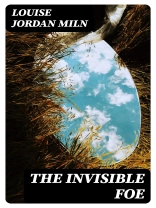In ‚The Invisible Foe, ‚ Louise Jordan Miln weaves a haunting narrative that deftly encapsulates the psychological intricacies of fear and isolation. Set against the backdrop of the early 20th century, Miln employs a modernist literary style characterized by stream-of-consciousness techniques and vivid imagery, reflecting the protagonist’s internal struggles with an unseen adversary. This exploration of existential dread not only resonates with contemporary themes of mental health but also serves as a window into the social anxieties of her time, marked by rapid changes and uncertainties regarding personal and collective identity. Louise Jordan Miln, an American author with a rich literary career, often drew inspiration from her experiences as a woman in a male-dominated literary world. Her background in social issues and commitment to women’s rights imbue ‚The Invisible Foe‘ with depth, as she articulates the often-voiceless fears that women face. Her unique perspective allows her to challenge societal norms and illuminate the psychological burdens placed upon individuals, particularly during periods of societal upheaval. I highly recommend ‚The Invisible Foe‘ for readers interested in psychological fiction that delves deep into human fears and societal constructs. Miln’s nuanced prose and complex characterization invite readers to reflect on their own battles with the invisible foes that manifest in their lives. Engaging and thought-provoking, this novel is an essential exploration of the human condition.
Über den Autor
Louise Jordan Miln, an early 20th-century author, established her literary niche with works that often explored the interplay between Western and Eastern cultures. She brought to her writing a wealth of personal experience garnered from time spent in China and other Asian countries, which lent an authenticity to her portrayal of the East. ‚The Invisible Foe, ‚ one of Miln’s celebrated works, is a novel that delves into the complexities of cultural conflicts and the intricacies of human emotions set against the backdrop of an exotic locale. Her narrative style is deeply reflective of the period’s sentiments and is characterized by intricate plots and well-rounded character development. While her name may not be as well-remembered as some of her contemporaries, Miln’s contributions to the literary canon of early 20th-century fiction offer a unique window into the perceptions and romanticized views of Eastern cultures by Western writers of the time. Her works stand as a testament to the literary cross-pollination that was taking place during an era where the world was rapidly shrinking due to advancements in transportation and communication.












